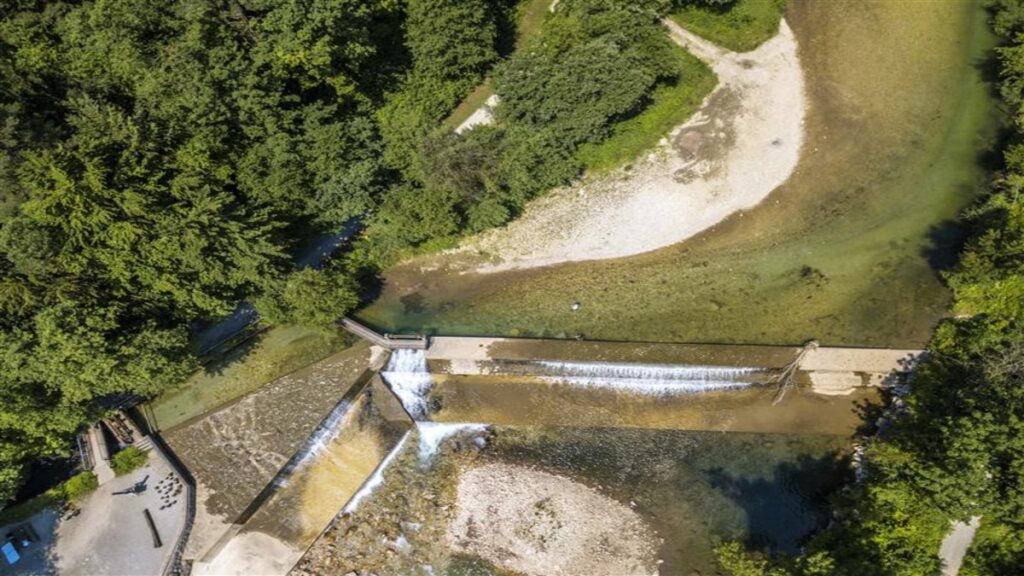Discover how bioremediation techniques treat toxic wastewater effectively, highlighting essential processes, reactor systems, and the impact of specialized bio cultures for sustainable water treatment solutions.
Toxic wastewater is a growing threat. It comes from industries and sewage. It harms ecosystems and public health. A sustainable solution is bioremediation wastewater treatment. This method uses microbes to clean water. It is eco‑friendly. It is cost‑effective. It can also meet strict discharge norms.
What Is Bioremediation in Wastewater Treatment?
Bioremediation in wastewater treatment relies on microbes. These organisms eat pollutants in water. They turn harmful compounds into benign ones. They remove organic matter, fats, oils, greases, and even heavy metals. This bioremediation process of wastewater treatment supports water reuse and environmental protection
Key Techniques
There are several biological products and systems used for treating toxic wastewater. These techniques exemplify bioremediation of waste water in real-world applications.
1. AMODA Microclean 01 – Effluent Treatment
This bio culture is designed to treat a wide range of industrial effluents. It contains powerful microbial strains that degrade biodegradable chemicals, neutralize toxic compounds, and reduce heavy metals. It also lowers BOD, COD, foul odour, and improves effluent clarity effectively.
2. AMODA Microclean 02 – Sewage Treatment
Formulated for municipal and domestic sewage, this bio culture promotes rapid decomposition of organic matter. It reduces odour, ammonia levels, BOD, and COD. It also accelerates MLSS development, enabling efficient treatment and lowering the volume of waste sludge in the system.
3. AMODA Microclean 03 – Anaerobic Treatment
This culture is ideal for anaerobic systems like UASB reactors and digesters. It boosts methane generation, stabilizes microbial populations, and accelerates degradation of complex organics. It improves system recovery, reduces digester downtime, and minimizes excess sludge accumulation in anaerobic wastewater treatment.
4. AMODA Microclean 05 – Oil & Grease Removal
This specialized product targets high oil and grease content in wastewater. It contains microbes that break down fats, oils, and greases (FOGs), preventing pipe blockages and improving biological system efficiency. It helps protect membranes and other equipment from organic overload damage.
5. AMODA Microclean 06 – Septic Biocleaner
Used in septic tanks and portable toilets, this product digests human waste, soaps, detergents, and fats. It reduces foul odour, solids buildup, and frequent pump-outs. It keeps septic systems functional, improves hygiene conditions, and reduces operational and maintenance challenges significantly.
6. AMODA Microclean 07 – Lake & Pond Cleaner
Formulated for water bodies like lakes and ponds, this blend digests organic sludge and reduces algae growth. It improves oxygen levels, cuts nitrates and phosphates, and enhances water clarity. It supports aquatic life and restores the ecological balance of stagnant water bodies.
7. AMODA Microclean 04 – Hospital Waste Treatment
Specifically designed for hospital and biomedical effluents, this culture targets pharmaceuticals, harmful pathogens, prions, and chemical residues. It lowers BOD/COD, controls toxic microbial presence, and reduces sludge. It ensures safer discharge of treated water and helps meet hospital effluent treatment standards.
Supporting Techniques and Systems
Beyond microbial blends, these techniques supports system-wide solutions in bioremediation wastewater treatment.
- They offer solutions to maintain MLSS levels in reactors.
- They support secondary biological treatment with nutrient dosing, aeration, buffers, and culture growth promoters (bio culture for wastewater treatment) .
- They assist in tertiary treatment—disinfection, coagulation/flocculation, pH adjustment, adsorbents, and oxidants.
Common Biological Reactor Technologies
Various reactor systems are used in modern wastewater treatment to support biological processes. These reactors work effectively with the right bio culture for wastewater treatment.
- Activated Sludge
Aerobic microbes in tanks form flocs that digest organic waste. This system effectively reduces BOD, COD, and suspended solids in large-scale wastewater treatment operations.
- Trickling Filters
Biofilms on media degrade pollutants in passing wastewater. These filters offer low-maintenance treatment, suitable for moderate organic loading and small to medium-sized facilities.
- Membrane Bioreactors (MBR)
Combine biological treatment with membrane filtration. MBRs provide high-quality effluent with minimal sludge production and are ideal for space-constrained or reuse-focused wastewater treatment plants.
- Sequencing Batch Reactors (SBR)
Batch systems offering fill, react, settle, and decant cycles. SBRs are flexible, handle variable loads efficiently, and are commonly used in municipal and industrial setups.
- Rotating Biological Contactors (RBC)
Discs rotating through wastewater build biofilm to remove organics. They are energy-efficient, require minimal operator attention, and work well for consistent, low-to-medium strength wastewater streams.
Each reactor type has specific advantages depending on the application. Selecting the right system enhances the performance of bioremediation in wastewater treatment.
Advantages of Bioremediation in Wastewater Treatment
Bioremediation wastewater treatment offers multiple gains:
- Cuts harmful chemicals and odours.
- Prevents high sludge generation.
- Operates safely and reduces chemical costs.
- Complies with environmental standards.
Challenges in the Bioremediation Process of Wastewater Treatment
Some limits do apply:
- Performance depends on correct microbe selection and dosing.
- Needs monitoring of pH, temperature, DO, and nutrients.
- Some pollutants resist biodegradation and may require pre-treatment.
Final Thoughts
Bioremediation wastewater treatment is a sustainable, cost-effective method for managing toxic effluents. With the right systems and bio culture for wastewater treatment, it ensures safe, compliant, and eco-friendly water recovery. Using these bioremediation of waste water techniques from Amoda Chem shows practical, effective treatment of toxic wastewater. Our advanced bioremediation wastewater treatment blends and support systems help industries meet compliance and sustainability goals.
For reliable bioremediation in wastewater treatment, choose Amoda Chem. Our expertise and product line help treat effluent biologically. We offer targeted bio culture for wastewater treatment for different needs.
Contact us today and optimize your wastewater treatment system with solutions built for industrial, municipal, and ecological performance!


